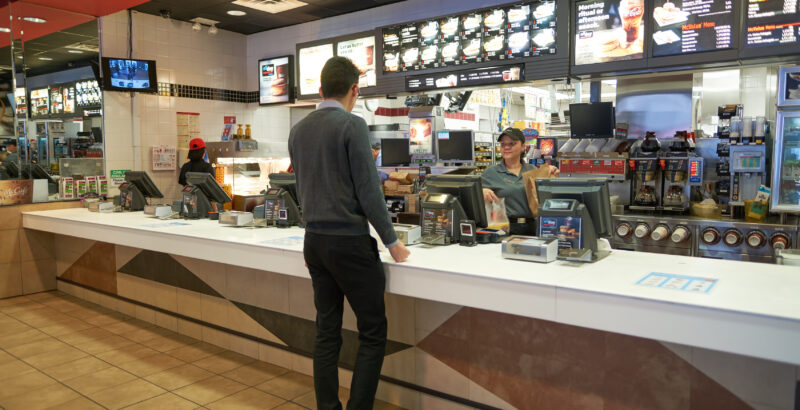Pest Management Solutions for Your Business
Nothing will shut a quick service food outlet faster than the presence of a cockroach or rodent. A scampering German cockroach or mouse droppings in a storage room will certainly be noted on a health inspector’s report.
Why are pests such a threat? Doesn’t the U.S. Food & Drug Administration have allowances for pests in processed food? The answer is yes, but the presence of pests – alive or dead – in a quick service restaurant threaten the integrity of the food prepared and served at the facility. Pests also put the health and safety of customers and employees at risk.

A scampering German cockroach or mouse droppings in a quick service restaurant storage room will certainly be noted on a health inspector’s report.
E. coli and salmonella are two of the most common bacteria behind food borne illnesses in consumers. Pests including flies, cockroaches and rodents are willing vectors of these bacteria and a zero-tolerance policy needs to be established.
From a business standpoint, the presence of pests damages brand reputations, adds costs to remediate the problem and puts the facility in danger of being fined or shut down by local health inspectors. Think of how quickly a video of a mouse in a quick service restaurant or food outlet goes viral on social media? One word – fast.
On a recent Sprague client webinar, regional entomologist Bobbie Orr, B.C.E., said health department inspections can make or break a quick service food outlet.
“Health inspectors can be very picky or reasonable but the presence of any pests or conducive conditions like poor sanitation will lead to action that could seriously impact a restaurant,” said Orr.
Orr encouraged restaurant owners, managers and staff need to develop relationships with health inspectors. A collaborative relationship with a health inspector, as well as your pest management service provider, can benefit quick service restaurants.
Pest management professionals and inspectors can share best practices tips, assist with employee training and provide a valuable independent set of eyes to evaluate if your facility is doing what it needs to protect against pests and maintain food safety standards.
Critical Risk Factors and Good Retail Practices
Health inspections usually focus on critical risk factors and good retail practices in quick service outlets that includes fast food restaurants, food courts, kiosks and cafeterias. Critical risk factors include:
- Employee knowledge
- Contamination prevention
- Time and temperature
- Sources of ingredients
- Water quality
- Pest management
Critical risk factors can include the inspector noting the sighting of live or dead insects in the facility.
Orr has reviewed multiple health inspector reports in her career where flies were observed landing on the interior surface of a bulk plastic food storage container and near food preparation areas. She recalled one instance where a restaurant was shut down by an inspector when seven live and 15 dead cockroaches and 10 live and one dead fly (floating in a seaweed container) were found.
Good retail practices for quick service restaurants and food outlets typically include the following:
- Supervision of personnel.
- Food preparation practices.
- Food storage preparation.
- Sanitation of equipment, facilities and serving utensils.
- Signs and posting.
- Physical facilities including pest proofing.
For more information on how Sprague Pest Solutions can assist you create and deliver an effective integrated pest management program for your quick service restaurant or food outlet, call 855.805.0755.

